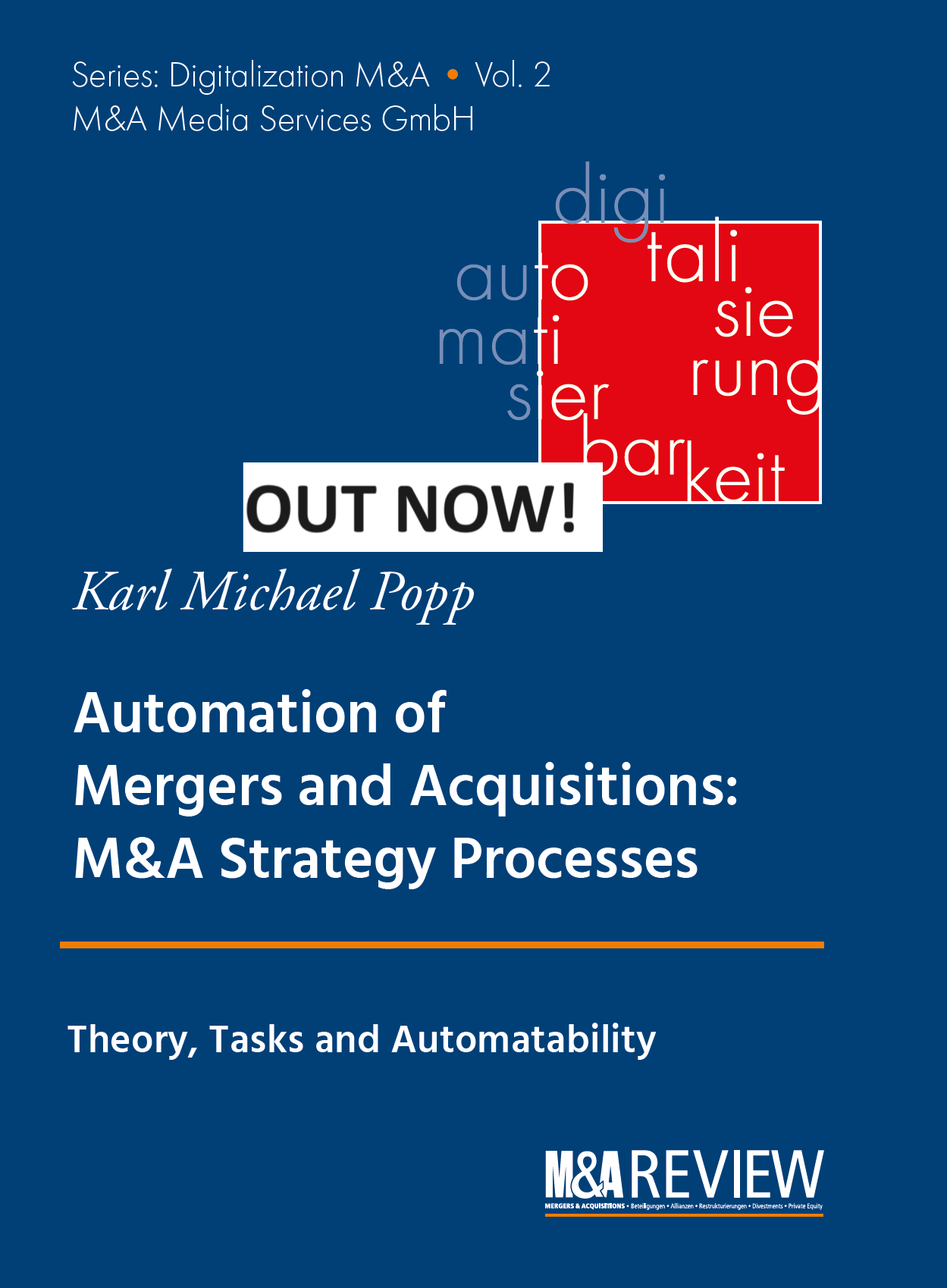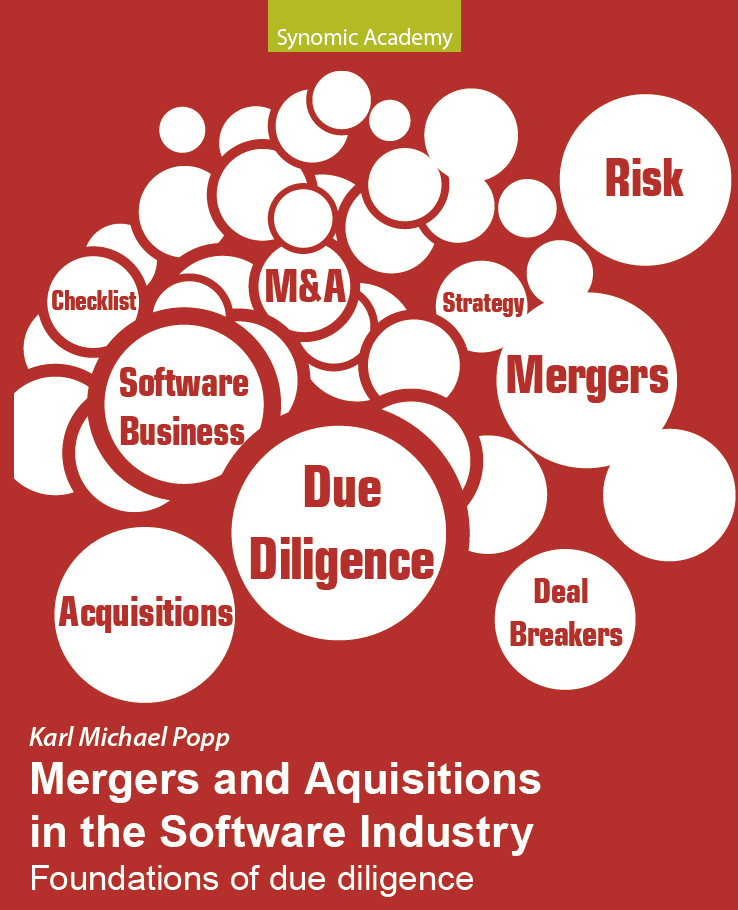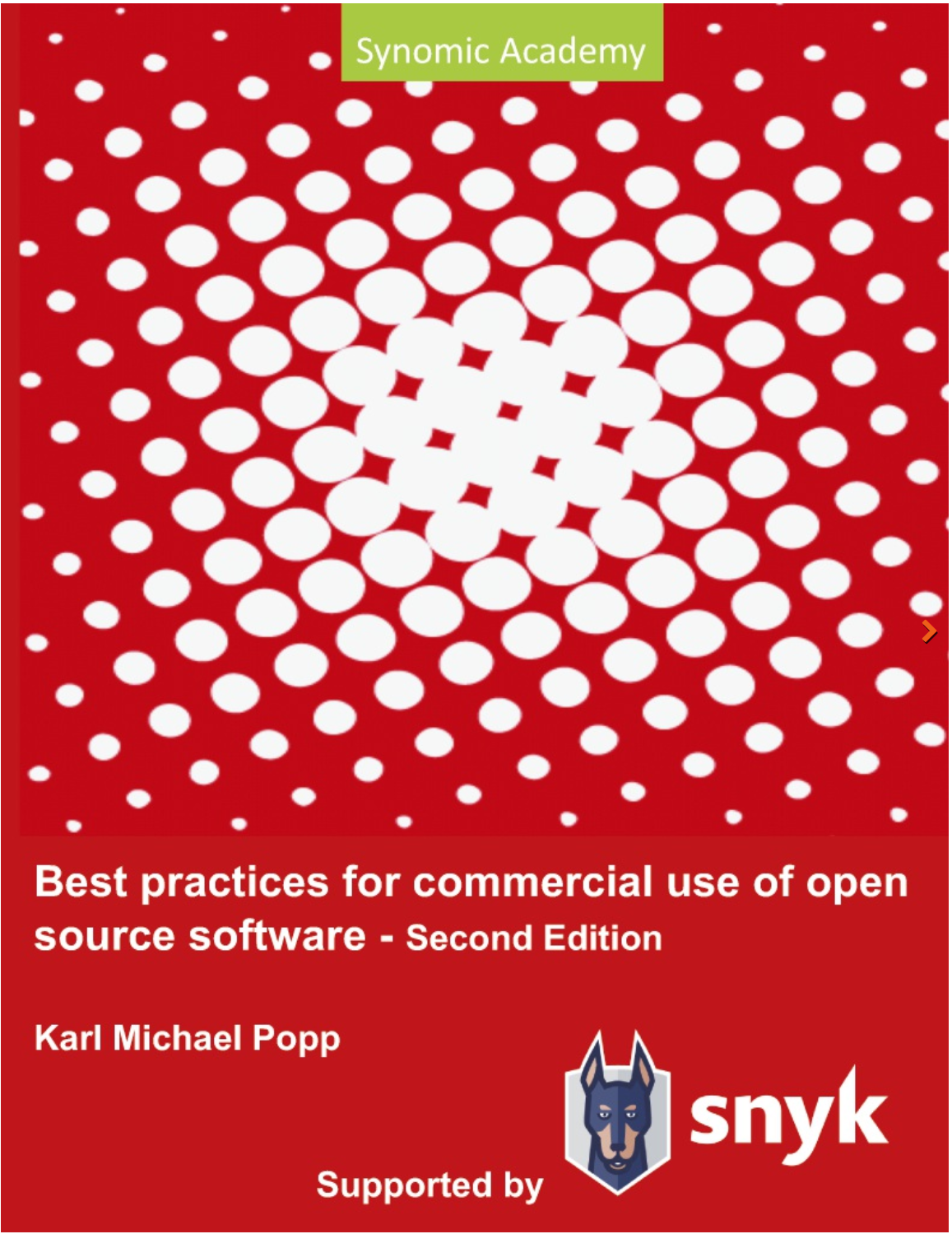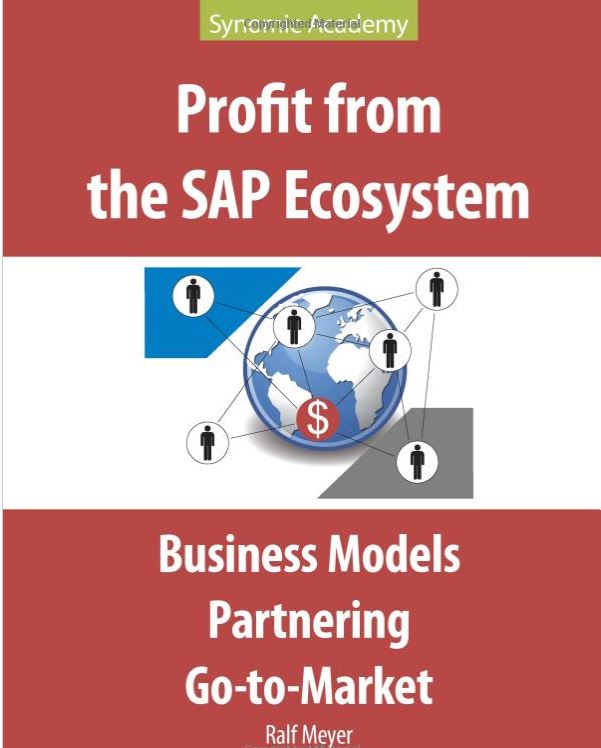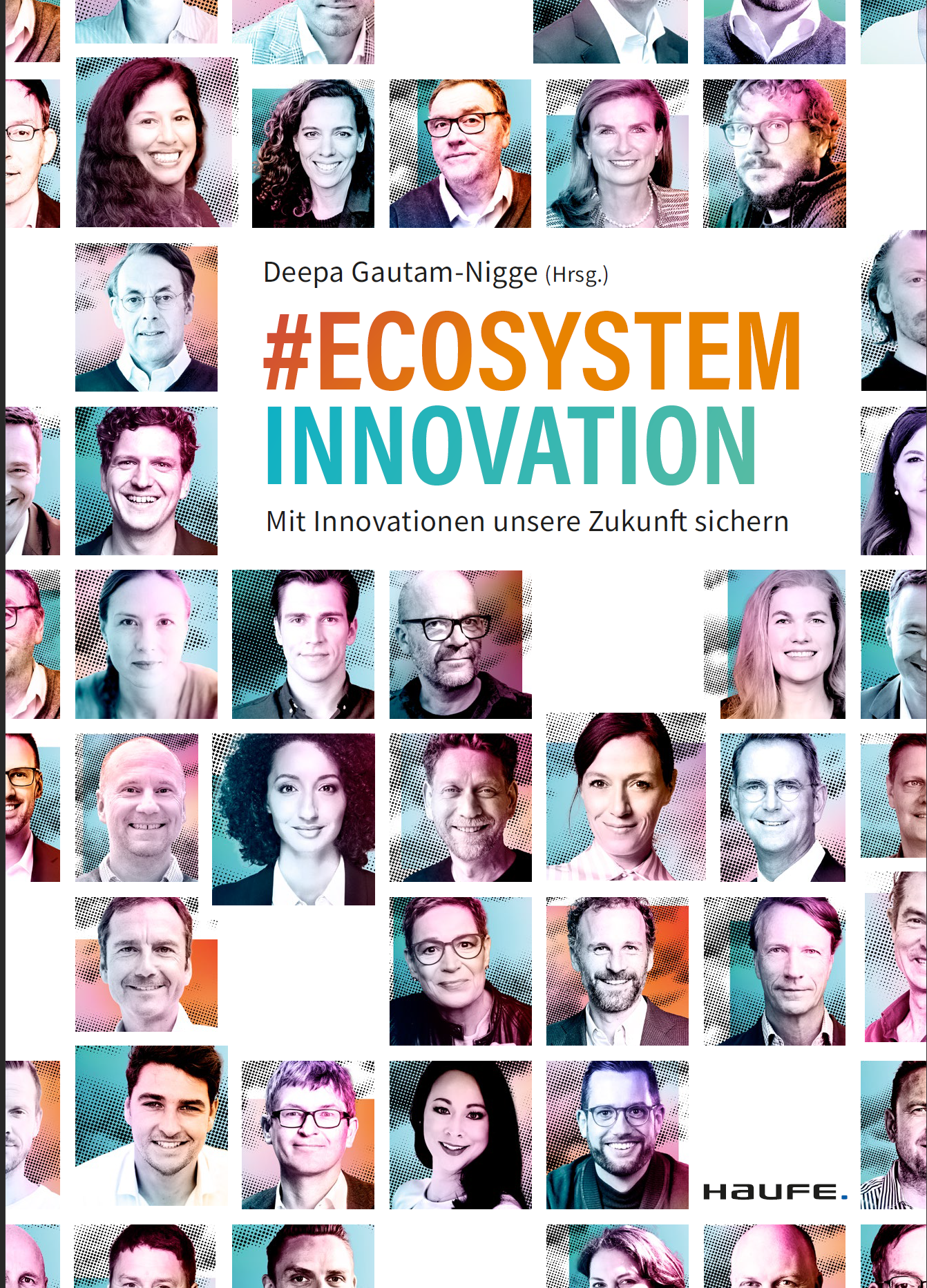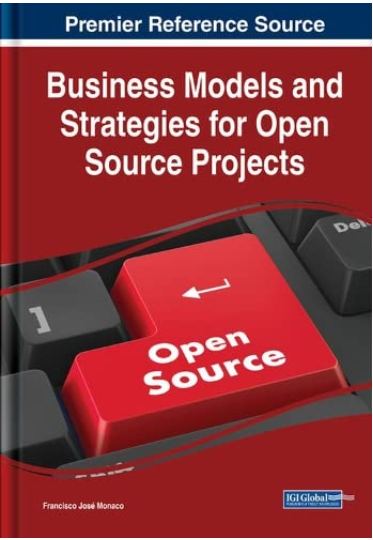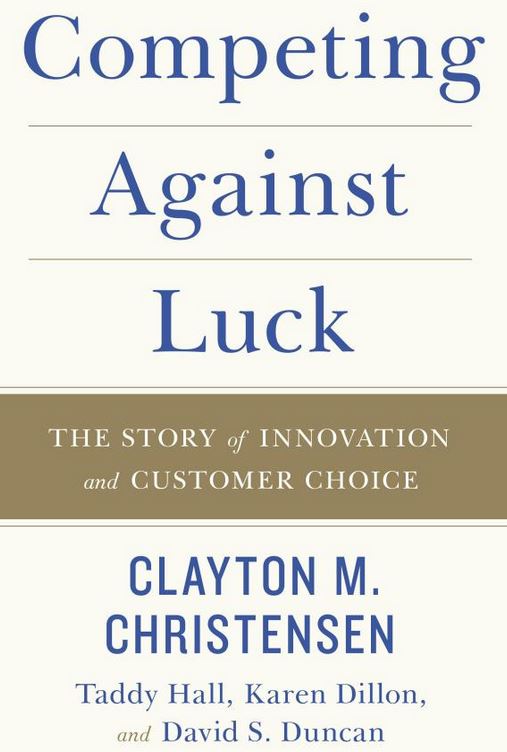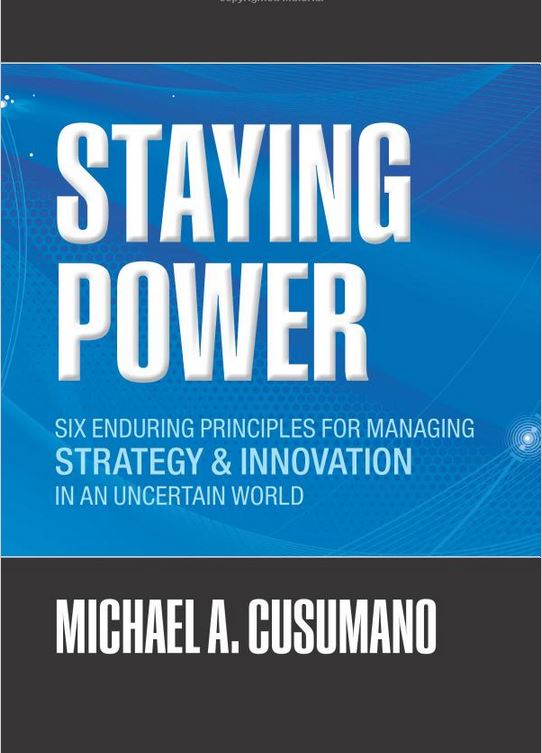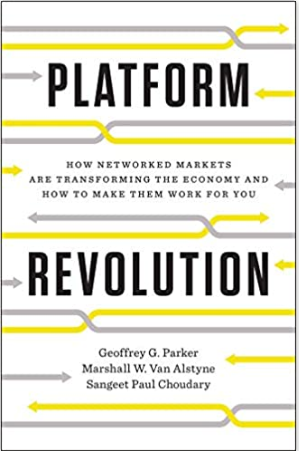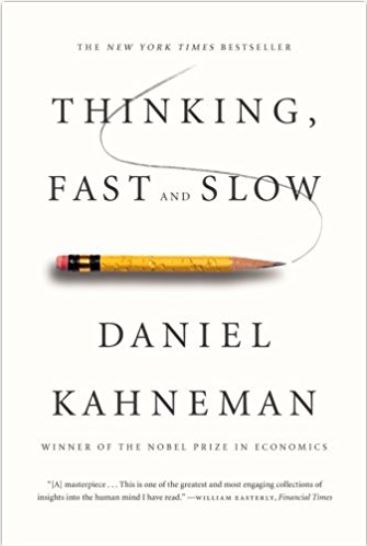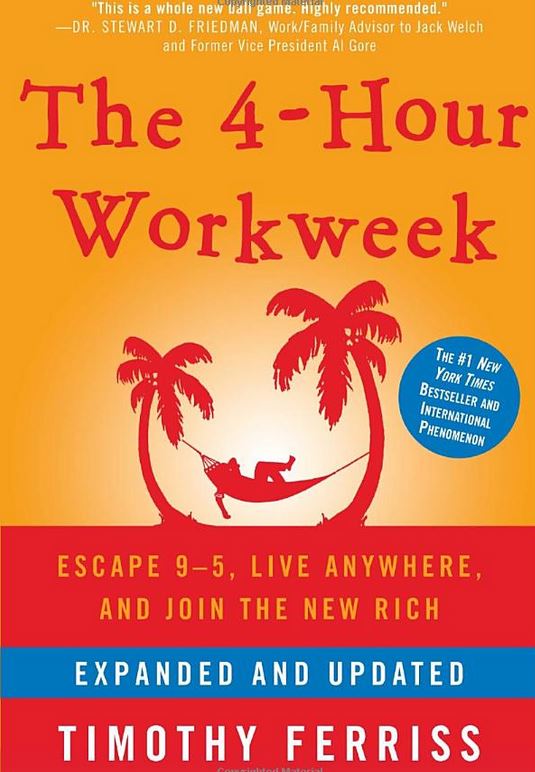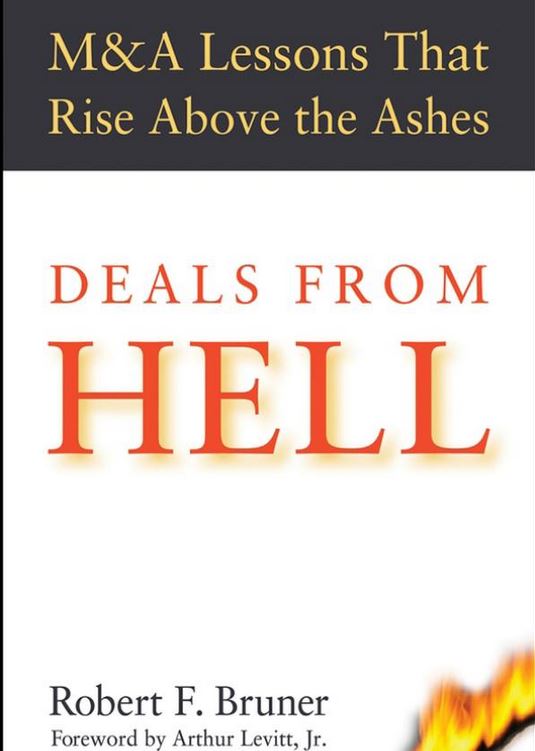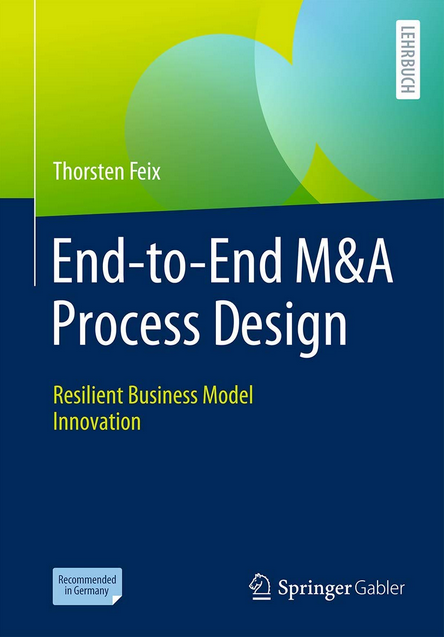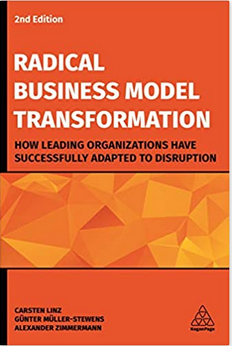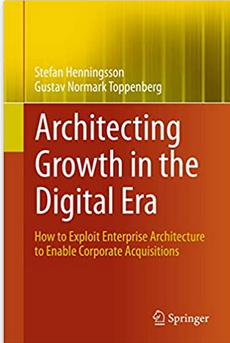LÄNDERSPEZIFISCHE FAKTOREN BEI DER FUSIONSINTEGRATION
Welche Auswirkungen haben Länder auf die Integrationsaktivitäten von Unternehmensfusionen? Wenn Sie an einer transnationalen Merger-Integration arbeiten, sollten Sie über Kenntnisse dieser Faktoren verfügen.
Multinationale Zielfirmen erstrecken sich über mehrere Länder mit Tochtergesellschaften in jedem der Länder. Es gibt viele Faktoren in einem bestimmten Land, welche die Integration von Fusionen beeinflussen, die auf überregionaler, nationaler und lokaler Ebene stattfinden. Hinzu kommen soziale und kulturelle Faktoren, die sich je nach Land oder Region unterscheiden, wie Arbeitstage innerhalb einer Woche, nationale Feiertagskalender, das politische Umfeld sowie die Präsenz und der Einfluss von Gewerkschaften.
Diese Faktoren sind:
Rechtlicher Rahmen
Soziologischer Rahmen
Kultureller Rahmen
Politisches Umfeld
Technologisches Umfeld
Ökologische Umwelt
Lokales Umfeld des Unternehmens
Hier ist mehr Hintergrund zu einigen der Faktoren:
RECHTLICHER RAHMEN
Jedes Land hat eine spezifische Reihe von Gesetzen und Vorschriften, die für die Integration von Fusionen gelten. Diese betreffen z.B. die Übertragung von physischem und geistigem Eigentum, Compliance- und Berichtspflichten des Unternehmens, das Verhalten in Wettbewerbssituationen, Vorschriften und Verfahren zur Beschäftigung und Unternehmensübertragung sowie die Berechnung und Zahlung von Steuern.
Für die Verschmelzung setzt der Rechtsrahmen Grenzen und regelt Integrationsaktivitäten wie die Integration von Unternehmen in eine einzige juristische Person sowie die Umstrukturierung. Manager von Merger Integrationsmaßnahmen müssen über Kenntnisse dieser rechtlichen Rahmenbedingungen verfügen, um die Auswirkungen zu ermitteln.
KULTURELLER RAHMEN
Nationale Kulturen können sich unterscheiden, wenn es um Religion, Ethnizität und Klassenstrukturen geht. Nationale Kulturen definieren laut Hofstede aber auch die Gleichheit/Ungleichheit in der Gesellschaft, die individuellen und kollektiven Aspekte, die Geschlechterrollen sowie die Vermeidung von Unsicherheit und Angst in einer Gesellschaft. Für die Integration von Fusionen müssen Sie sich dieser kulturellen Aspekte bewusst sein.
POLITISCHES UMFELD
Wie wirkt sich das politische Umfeld auf die Integration von Fusionen aus? Aus aktiver Sicht treiben die Politiker Gesetze und Haushaltsentscheidungen voran. Sie werden mit dem Erwerber zusammenarbeiten, wenn die erwarteten positiven Auswirkungen der Fusionsintegration hoch sind und dem Politiker von Nutzen sind.
Aus passiver Sicht müssen Politiker auf mögliche negative Wahrnehmungen und Ergebnisse oder Nebenwirkungen von Fusionsintegrationsaktivitäten wie Streiks der Belegschaft im Falle von Umstrukturierungen reagieren. Für die Integration von Fusionen müssen Sie sich über das politische Umfeld in jedem Land im Klaren sein, das von der Integration betroffen ist.
TECHNOLOGISCHES UMFELD
Verschiedene Branchen haben unterschiedliche Anforderungen an das Vorhandensein oder die Verfügbarkeit von Technologie in einem bestimmten Land. Dies könnte sich auf die nationale technologische Infrastruktur wie Verfügbarkeit von Strom, Kühlung, Wärme, Transport sowie auf lokale Lieferanten mit der richtigen Technologie, Kompetenz und Versorgung beziehen, aber auch auf die Verfügbarkeit qualifizierter Mitarbeiter.
ÖKOLOGISCHE UMWELT
Ein Unternehmen ist immer in sein lokales ökologisches Umfeld eingebettet. Natürliche Ressourcen, Ökologie sowie Umweltschutzanforderungen sind Beispiele für die ökologische Umwelt. Die Ergebnisse der Due Diligence können zu Arbeitsaufgaben für die Fusionsintegration führen, wie z.B. Umweltsanierungsaktivitäten.
LOKALES UNTERNEHMENSUMFELD
Neben den oben beschriebenen makroökonomischen Faktoren ist jedes lokale Unternehmen in einen mikroökonomischen Kontext mit lokalen Wettbewerbern und Lieferanten und Mitarbeitern eingebettet und muss sich mit den lokalen Finanzierungsbedingungen und den lokalen Gesetzen und Vorschriften auseinandersetzen.
Strategy 101: Modeling Strategy with Strategic entities
Strategic assumptions, goals and entities
In a simplified view, you could say that a strategy consists of strategic goals and measures under certain assumptions about strategic entities, i.e. the company, its ecosystem including the competition and its business and operational models as well as its capabilities.
Let´s say, strategic assumptions are descriptions of the current or future state or change of state of strategic entities and strategic goals are definitions of the future state of one or more strategic entities.
So, Strategic goals and strategic assumptions relate to strategic entities. Strategic entities contain certain elements of the data model for M&A, that are strategically relevant for the buyer company. Examples for strategic entities are Market of the target, Target business model, Buyer customer, Product of the target, Regulatory authority and many others.
Figure 1: Strategic goals and strategic entities
Reasons for using strategic entities
Why do we use strategic entities? There are two reasons. First, since we have a holistic model, we know which tasks relate to which data objects. So we can automatically derive to which tasks the strategic goals apply by “following the path” from data objects to tasks in the company.
Here´s an example. Let us assume the strategy of a company is to be the price leader by always providing the lowest prices to potential customers. In our model we can derive all tasks that work on prices or set prices. So all of these tasks have to comply with the strategic goal of being price leader.
The second reason is that we try to avoid incompleteness of strategy. By having an exact set of strategic entities, we can enforce having strategic goals for each of the strategic entities to avoid blind spots in our strategy.
Real life examples
Strategic entities are not just a few, single data objects. They are views on the data model. If you look at a strategic entity called Target Product, you come up with at least the following data objects from our data model: Price of the target products, Discount rules of the target product, Product complementarity between target´s and buyer´s products, Substitutes for target products etc. as displayed in this figure.
Figure 2: Strategic entity Product of the target
In reality, the strategic entity Target Product is a lot more complex. In my tool, i have modeled and stored very detailed models of strategic entities. Here´s the detailed model of Target Product.
Figure 2: Detailed model of the strategic entity Product of the target
Read more in my upcoming book on M&A strategy and in my book about due diligence automation.
Creating and operationalizing new M&A processes
Let´s assume you have designed a new process and are chartered to implement and operationalize the process. Here are some topics to consider and some questions you should ask yourself.
What is the scope of process design:
- Example scope: tasks, task owners, application systems, organizational design and decision paths, task execution descriptions, process design and task coupling, exception handling and its process design including escalation paths.
What is the origin of process design:
- Driven by task owners or by third parties?
Innovation and disruption potential of new processes:
- Is it a new process for an organization or a change to a current process?
- Even more generally: is it a new business model for a company?
- Are the task owners/departments new to a company?
Automatability and automation questions:
- Can the process be partially automated? Should it be partially-automated or manual?
- Are fully automated processes part of the scope of the study?
What is the starting point for process implementation:
- Does the company that is to execute the processes already exist?
- Do the task carriers (departments, employees, machines, software) already exist?
- Are existing application systems to be used, changed, extended?
- Do the employees have the appropriate skills?
- Will an existing application system be used?
Implementation obstacles and delays
- Is the process, its implementation and the use of application systems subject to works council approvals?
- Is the monitoring of the process subject to works council approvals?
- What influence does the adaptability, the implementation of the adaptation of application systems have on the implementation time?
If you like my way of thinking, please consider the following books and magazines.
Augmented strategy - the future of strategic planning
Augmentation today
Technological advances in augmented reality (AR) have led to products that inform, entertain, and engage audiences of all ages. Augmented reality uses information about the current physical reality. AR puts this important digital information directly in the environment of the physical world, thus taking it one step further.
Companies have introduced augmented reality into their marketing, products, and customer experience strategies and other areas of operational processes are following. The process of creating and evaluating company strategies remains a blind spot for augmentation.
What about strategy processes?
Looking at current and historic strategy processes, augmentation of context-relevant information has always been around. Most of the time, the augmentation was a manual activity. So, companies relied on the involved people, their access to information, their experience to augment the right information for strategy decisions.
Manual activities and solely relying on the involved people introduces chances of error, bias and noise into strategy processes. Looking at the impact of strategy decisions, this situation is not acceptable. Ways for better, automated augmentation of the right information instantly is desperately needed to lower the chance of error, to avoid bias and noise in strategy decisions.
You can view automated augmentation as an intelligent assistant that provides data, scenarios, help at the right time, provides answers backed by the available data and uses machine learning, data analytics and scenario evaluation.
Example
Say, you set a strategic goal to grow your company revenue by 15 percent each year for the upcoming five years. The augmented information will include e.g.:
An evaluation of the company´s ability to grow revenue by the required growth rate (what market share would be needed, how does the competition grow, how does the company´s headcount have to grow to reach the goal, can we increase prices over time),
An evaluation and prediction how the competition and the market could evolve (prediction of the growth of competitors and the market, potential shift of market shares, impact of new entrants on market shares),
A likelihood of reaching the goal under the current circumstances as well as under different scenarios for changes in the company and in the market (can we grow even more? Should we hire more people, should we partner to speed up growth),
A prediction of the economic situation over the next five years with different economic growth scenarios and the impact on the company´s growth.
Summary
Augmenting strategy creation automatically is an important step forward to enable positive change in strategy creation processes. Automated augmentation lowers efforts of manual data search and manual data preparation and reduces the chance or manually introducing error, bias and noise.
Some thoughts on merger automation
Merger automation: This is a topic I am addressing in my current books. Automation is actually something simple. Tasks are not done manually, but partially or fully automatic.
Automations in the M&A process are cast in software. So, we did a little study on what digitization technologies would be applicable in the M&A process. The question is: Which technologies can I use to support M&A practitioners? We came up with about 50 different technologies, including various shades of analytics and machine learning. The results show that for technologies that have been on the market longer, there is also a greater number of tools.
Here´s an example. Search engine technology has been on the market for about twenty years. If we look at the different M&A phases in terms of where search tasks exist, e.g. the target search, there are about a dozen tools for target search, and that is only a sample. In contrast, there seem to be far fewer or no tools at all for the other tasks in the strategy phase. In the next few years, new tools will certainly come onto the market; currently, we are still in the early adaptation phase of new technologies in the M&A process.
But you not only have to know the tools, you also have to apply and use them in practice. For example, the search engine technology mentioned is not a new technology but has been in use for a long time. Only when a technology has entered the mindset of M&A practitioners they will use it. Today, that certainly is the case with search, but not with RPA or machine learning .
Automation opportunities in due diligence
You can either do due diligence in the classic way without technology support or with supporting tools. Let's take the purchase of a small software company as an example. Classic means that you get documents, have management meetings, hold due diligence meetings, and then try to make sense of them. You try to make sense of it all and draw conclusions from the usually very extensive information provided. This is very time-consuming, and you always have the feeling "Somehow we don't know everything yet, but time is running out" or "We would have liked to ask so many more questions."
In contrast, you can run various automated tools in the due diligence process that, for example, analyze which licensed software is included in the target's product. Through the analyses mentioned, you can get, for example, a list of 500 pieces of open source and 10 pieces of in-licensed software. That saves a lot of manual work during due diligence.
Furthermore, you might use different tools to find security vulnerabilities. These tools run automatically and report potential security gaps. You then have to look through the gaps in detail and evaluate which ones need to be mitigated.
Even more advanced, you can use a service provider's tool that analyzes source code repositories of the target. There, for example, an assessment is made of the complexity, quality or architecture of the software products. These are points that would otherwise have had to be inquired about during due diligence and that can usually only be generated manually, if at all, with a great deal of effort. A particularly important effect from this automated analysis is that it gives us more space for high-quality discussions during due diligence in the same period of time. For example, these are discussions on the mitigation of problems and risks.
Automated analysis of due diligence documents
Contract analysis is much more advanced today than most practitioners realize. There are tools today that combine contracts with 75 attachments into a summary contract. Using certain keywords, these tools then find explanations of control rights, clauses with possible compensation payments or other things in the contract. This is relatively simple to achieve. A few tools go one step further and can do clause analyses, i.e. evaluations of the clauses. For example, these tools can find a liability clause but classify it as low-critical by finding out it is limited to 100,000 euros. That's what I would call state of the art. I see the key benefit of this type of automation primarily in legal due diligence. If I have four weeks for due diligence, three weeks of that should not be used to read contracts. With the automations I mentioned above, ideally a list of legal risks is already available on day one, when the documents are provided. Then we have the rest of the four weeks to think about how to deal with it.
From data rooms to innovation platforms
What I would like to see, but which is not yet in use today, is an integrated data room in which not only the analyses of contracts, but also linked analyses of products, escalations in support or other things in the company run. In other words, a kind of forensic analysis. This would enable me, for example, to analyze an existing escalation with a customer not in isolation, but in conjunction with the associated contract, payments received or historical orders. Overall, I see the data room providers on the way to providing machine learning applications in their data rooms. The companies are at different stages of development, but they are all still relatively far at the beginning. But things are happening to make the automation level of data room analytics better for the regular use.
But to get from data rooms being transaction platforms to innovation platforms, data room providers have to open up their platforms to other software vendors, provide APIs for the data and allow partner innovations on top of data rooms. This will massively speed up new development and increase the speed of innovation for solutions for the M&A process.
Die Herausforderungen von Carve-Outs
Die Herausforderungen von Carve-Outs
Unternehmen können sich dafür entscheiden, ihr Geschäftsmodell neu auszurichten und Geschäftsbereiche oder Tochtergesellschaften mit spezifischen Geschäfts- und Betriebsstrategien auszugliedern, was ebenso wichtig ist wie M & A. Oder sie entscheiden sich für die Ausgliederung oder den Verkauf einzelner Geschäftseinheiten. Ein eigenständiges Unternehmen oder eine Ausgliederung zeichnet sich dadurch aus, dass ein ausgegliederter Geschäftsbereich für die Fortführung der Geschäftstätigkeit die weitere Unterstützung der Muttergesellschaft benötigt. [Quellen: 6, 7, 8]
Im traditionellen Sinne des Wortes ist ein Spin-off ein Teilverkauf eines Geschäftsbereichs, den ein Unternehmen durch den Verkauf eines Teils seines Geschäfts an eine externe Partei durchführt. Der Begriff "Carve-out" bezeichnet die operativen und organisatorischen Aktivitäten, die erforderlich sind, um die Übertragung von Vermögenswerten im Rahmen einer Veräußerungstransaktion abzuschließen. (Quellen: 9, 11)
Sowohl der Verkäufer als auch der Käufer sind in erheblichem Maße für den Carve-out-Prozess verantwortlich, und es liegt in der Verantwortung des Käufers, eine Vielzahl einzigartiger und komplexer Fragen zu klären, um den Geschäftswert der Carve-out-Transaktion zu erhalten und zu maximieren. [Quellen: 9, 11].
Abhängigkeiten und Verflechtungen
Die Muttergesellschaft kann gemeinsame Funktionen wie Personal, Prozesse und Systeme, Verträge mit Kunden, Lieferanten und Partnern sowie Vermögenswerte wie Anlagen und geistiges Eigentum beibehalten, solange sie vom Unternehmen genutzt werden. Das klassische Problem ist das, was die Erwerber als Abspaltung bezeichnen, bei der das zu veräußernde Geschäft in der Unternehmensinfrastruktur der Muttergesellschaft verankert bleibt. Die ausgegliederten Vermögenswerte des Unternehmens bleiben durch gemeinsame Kunden, Lieferanten, Produktionsprozesse, Unternehmensfunktionen und technologische Infrastruktur mit der Muttergesellschaft verbunden. [Quellen: 4, 8]
Transition-Service-Vereinbarungen (TSA)
TSAs sind eine Besonderheit von Carveouts und werden häufig auf die Komplexität und die Kosten von Transaktionen zurückgeführt. Die TSA-Muttergesellschaft erklärt sich bereit, dem Erwerber Dienstleistungen zu erbringen, um die Kontinuität der Geschäftstätigkeit des ausgegliederten Unternehmens zu gewährleisten. Die mit dem Betrieb verbundenen Kosten, die nach der Abspaltung nicht beseitigt werden können, können mit dem Personal zusammenhängen, das auf der Gehaltsliste der Muttergesellschaft verbleibt und dem Erwerber TSA-Dienstleistungen erbringt. Innerhalb eines klar definierten Transaktionsumfangs entscheidet der Verkäufer, welche Parteien gemeinsame Funktionen in der zu veräußernden Muttergesellschaft beibehalten, einschließlich Personal, Prozesse, Systeme, Verträge mit Dritten, Kunden, Lieferanten, Partner und Vermögenswerte wie Anlagen, geistiges Eigentum usw. [Quellen: 0, 4]
Informationstechnologie
Der Erwerb eines ausgegliederten Geschäftsbereichs oder Vermögenswerts ist eine gute Gelegenheit zur Wertschöpfung, birgt aber auch einzigartige Risiken in sich. Die Abspaltung eines Unternehmens von seiner Muttergesellschaft kann zu einer komplexen Transaktion führen. Um die gewünschte betriebliche Effizienz und Funktion zu erreichen, arbeiten die meisten Unternehmen auf der Grundlage integrierter Prozesse, Anwendungen und Daten, die den Großteil der Geschäftsaktivitäten eines Unternehmens unterstützen. Wenn eine bestimmte Geschäftseinheit, ein Geschäftsbereich, eine Produktlinie oder ein Vermögenswert von der Muttergesellschaft verkauft wird, müssen diese Systeme und Daten von der Betriebsumgebung der Muttergesellschaft getrennt oder ausgegliedert werden. Die größte Herausforderung für eine gute Geschäftsentscheidung besteht darin, einen bestimmten Geschäftsbereich abzuspalten oder auszugliedern, damit er nicht zu einem chaotischen Gemisch aus Informationen, Anwendungssystemen und IT-Infrastruktur wird. [Quellen: 1, 8, 9,11]
Um dieses Risiko zu mindern, muss der Erwerber sicherstellen, dass die Muttergesellschaft ausreichende IT-Dienste bereitstellt, um betriebliche Lücken beim Übergang des Erwerbers zu schließen und Geschäftsbereiche mit eigener Infrastruktur auszugliedern. [Quellen: 8]
Was die Anwendungssysteme betrifft, so bietet eine Veräußerungstransaktion die Gelegenheit, die ERP-Plattform der Muttergesellschaft des ausgegliederten Geschäftsbereichs umzugestalten und im Rahmen der Durchführung der Post-Transaktion zu modernisieren. Im Falle einer finanziellen Ausgliederung beträgt der typische Zeitraum zwischen der Unterzeichnung und dem Abschluss ein bis drei Monate, in denen eine Vereinbarung über Übergangsdienstleistungen ausgehandelt wird, um dem Käufer des ausgegliederten Geschäftsbereichs und der Muttergesellschaft IT- und Betriebsunterstützung zu bieten. [Quellen: 3, 5]
Kosten
Die Kostenstruktur der Muttergesellschaften, einschließlich der Ausgaben im Zusammenhang mit dem Betrieb des ausgegliederten Geschäftsbereichs, kann durch eine Abspaltung nicht beseitigt werden. Da die Ausgliederung eine wichtige Rolle dabei spielt, einem Unternehmen zu helfen, Geld zu beschaffen, um seine Erwartungen an die Investoren zu erfüllen, kann es sich ein Unternehmen schlecht leisten, dass hohe Abspaltungskosten das Erreichen seiner Wertschöpfungsziele behindern. [Quellen: 0]
Es hilft, sich ein genaues Bild von den Kosten und Synergien zu machen, die durch die Herauslösung des Unternehmens als eigenständiges Unternehmen verloren gehen. Der Vorteil für strategische Käufer besteht darin, dass die Übernahme der kaufmännischen Managementfunktionen dem Verkäufer einen höheren Wert bringt. Durch die Verlagerung des Risikos auf eine dritte Versicherungsgesellschaft können sich Käufer und Verkäufer auf das Geschäft konzentrieren und die Besteuerung nach der Transaktion den Steuerexperten überlassen. [Quellen: 0, 1, 4]
Quellen:
[0]: https://www.bcg.com/publications/2021/beware-of-separation-costs-compromise-value-creation
[1]: https://www.jdsupra.com/legalnews/private-equity-carve-outs-ride-post-2947351/
[2]: https://www.macouncil.org/training-series/art-ma-divestitures-carve-outs
[3]: https://www.westmonroe.com/offerings/carveouts-divestitures
[4]: https://www.financierworldwide.com/roundtable-spin-offs-carve-outs
[5]: https://deloitte.wsj.com/articles/in-divestiture-plan-erp-separation-carefully-01624993329
[6]: https://www.snpgroup.com/en-us/carve-out
[7]: https://pmiadvisors.com/carve-outs/
[8]: https://www.mckinsey.com/business-functions/strategy-and-corporate-finance/our-insights/solving-the-carve-out-conundrum
[9]: https://blogs.sap.com/2021/04/19/how-to-perform-a-successful-carve-out-in-sap-ecc-and-sap-s-4hana/
[10]: https://www.ey.com/en_us/divestitures
[11]: https://www.mapartners.net/insights/carve-out-process-six-steps-ensuring-success
The Challenges of Carve-Outs
The Challenges of Carve-Outs
Companies can choose to realign their business model and spin off divisions or subsidiaries with specific business and operational strategies, which is just as important as M & A. Or they decide to spin-off or sell individual business units. A stand-alone company or a spin-off is characterized by the fact that a divested business requires the continued support of its parent company in order to continue operations. [Sources: 6, 7, 8]
In the traditional sense of the word a spin-off is a partial sale of a business unit a company carries out by selling part of its business to an external party. The term "carve-out" defines the operational and organizational activities required to complete the transfer of assets in a transaction of divestiture. [Sources: 9, 11]
Both the seller and the buyer share a significant responsibility for the carve-out process, and the onus is on the buyer to address a variety of unique and complex issues in order to maintain and maximize the goodwill of the carve-out transaction. [Sources: 9, 11].
Ties and entanglements
The parent company may retain common functions such as staff, processes, and systems, third party contracts for customers, vendors, and partners as well as assets such as facilities and intellectual property as long as they are used by the company. The classic conundrum is what the acquirers call a spin-off, in which the business to be divested remains entangled in the parent company's corporate infrastructure. The spun-off assets of the company will remain tied to the parent company through joint customers, suppliers, production processes, corporate functions, and technological infrastructure. [Sources: 4, 8]
Transfer Services Agreements
TSAs are unique to carveouts and are often attributed to the complexity and cost of transactions. The TSA parent company agrees to provide services to the purchaser in order to ensure the continuity of operations of the divested entity. Expenses associated with the operation that cannot be eliminated after the spin-off may be related to personnel remaining on the parent company's payroll and providing TSA services to the purchaser. Within a clearly defined transaction scope, the vendor decides which parties retain common functions in the parent company being sold including personnel, processes, systems, contracts with third parties, customers, vendors, partners, and assets such as facilities, intellectual property, etc. [Sources: 0, 4]
Information Technology
Acquiring a spun-off business unit or asset is a fantastic opportunity to create value, but there are unique risks associated with the business. Separating a company from its parent company can lead to a delicate transaction. In order to achieve desired operational efficiency and function, most companies work on the basis of integrated processes, applications, and data that support most of a company's business activities. When a particular business unit, division, product line or asset is sold by the parent company, these systems and data must be separated or spun off from the operating environment of the parent organization. The biggest challenge for a good business decision is to split or spin off a particular business unit so that it does not become a chaotic mix of information, application systems and IT infrastructure. [Sources: 1, 8, 9,11]
To mitigate this risk, the acquirer must ensure that the parent company provides sufficient IT services to close operational gaps in the acquirer's transition and to spin-off business units with its own infrastructure. [Sources: 8]
Regarding application systems, a divestment transaction is an opportunity to transform the ERP platform of the parent company of the divested business unit and modernize it as part of the execution of the post transaction. In the case of a financial carve-out, the typical period between signing and closing is one to three months during which a transitional services agreement is negotiated to provide IT and operational support to the buyer of the carved-out business and parent company. [Sources: 3, 5]
Cost
The cost structure of the parent companies, including the expenditure associated with the operation of the divested business, cannot be eliminated by a spin-off. Since divestment plays an important role in helping a company raise money to meet its expectations to investors, a company can ill afford high separation costs to hamper the achievement of its value-added goals. [Sources: 0]
It helps to get a true picture of the costs and synergies that are lost through the extraction of the company as an independent company. The advantage for strategic buyers is that the acquisition of commercial management functions brings a higher value to the seller. By shifting the risk to a third-party insurance company, buyers and sellers can focus on the business and leave post-transaction taxation to tax experts. [Sources: 0, 1, 4]
Sources
[0]: https://www.bcg.com/publications/2021/beware-of-separation-costs-compromise-value-creation
[1]: https://www.jdsupra.com/legalnews/private-equity-carve-outs-ride-post-2947351/
[2]: https://www.macouncil.org/training-series/art-ma-divestitures-carve-outs
[3]: https://www.westmonroe.com/offerings/carveouts-divestitures
[4]: https://www.financierworldwide.com/roundtable-spin-offs-carve-outs
[5]: https://deloitte.wsj.com/articles/in-divestiture-plan-erp-separation-carefully-01624993329
[6]: https://www.snpgroup.com/en-us/carve-out
[7]: https://pmiadvisors.com/carve-outs/
[8]: https://www.mckinsey.com/business-functions/strategy-and-corporate-finance/our-insights/solving-the-carve-out-conundrum
[9]: https://blogs.sap.com/2021/04/19/how-to-perform-a-successful-carve-out-in-sap-ecc-and-sap-s-4hana/
[10]: https://www.ey.com/en_us/divestitures
[11]: https://www.mapartners.net/insights/carve-out-process-six-steps-ensuring-success
Plattform-Geschäftsmodelle - die Grundlagen
Plattform-Geschäftsmodelle - die Grundlagen
In einem Buch mit dem Titel Business Model Generation (2010) von Osterwalder und Pigneur geht es um Plattformen, zu deren Beispielen Apple, Visa, Google, eBay und Microsoft Windows gehören. Eines der erfolgreichsten Geschäftsmodelle dieser Ära ist das Plattform-Geschäftsmodell, das ein Ökosystem verwaltet und unterhält, um wirtschaftlichen Wert in Form von Transaktionsgebühren oder auf andere Weise zu erzielen. (Quellen: 11, 16, 17)
In der Regel schafft ein Plattform-Geschäftsmodell Werte, indem es den Austausch zwischen zwei oder mehreren voneinander abhängigen Gruppen erleichtert. Es macht sich ein Ökosystem von Nutzern wie Konsumenten, Produzenten, Verkäufern, Käufern, Fahrern, Gastgebern oder Gästen zunutze, um Transaktionen zwischen ihnen innerhalb eines großen Netzwerks zu erleichtern. (Quellen: 1, 4, 16)
Plattformtypen und Design
Obwohl es eine Reihe verschiedener Plattformtypen und viele verschiedene Klassifizierungen gibt, sind die beiden gängigsten Plattform-Geschäftsmodelle die so genannten Transaktionsplattformen und Innovations-Ökosystem-Plattformen. [Quellen: 8, 14] Transaktionsplattformen ermöglichen Transaktionen zwischen Teilnehmern, die sich in der Regel auf verschiedenen Seiten der Plattform befinden. Innovations-Ökosystem-Plattformen bieten ein Umfeld, in dem die Teilnehmer über das Angebot der Plattform hinaus innovieren können. Ein typisches Beispiel aus der Technologiebranche ist die Schaffung einer Reihe von APIs, die von einer Plattform bereitgestellt werden, um darauf aufbauend Lösungen zu entwickeln. Innovations-Ökosystem-Plattformen mit großen Ökosystemen sind Infrastructure-as-a-Service-Anbieter wie Amazon, Google oder Alibaba.
Bei Transaktionsplattformen liegt der Schwerpunkt nicht auf der Generierung von Einnahmen auf Transaktionsbasis aus der Produktion und dem Verkauf von Waren und Dienstleistungen, sondern das Geschäftsmodell der Plattform ermöglicht wertvolle Verbindungen zwischen den Nutzern. Die Suche nach den richtigen Kerntransaktionen, die zwischen den Nutzern der Plattform ermöglicht werden sollen, ist ein wichtiger Teil des Plattformdesigns, da das Plattformgeschäft darauf angewiesen ist, dass seine Nutzer diese Transaktionen wiederholen, um einen Wertaustausch zu generieren. (Quellen: 1, 5, 14)
Bei der Gestaltung von Plattformen für Innovationsökosysteme geht es vor allem darum, den Teilnehmern eine niedrigschwellige, leicht zu bedienende Umgebung zu bieten, damit sich schnell ein großes Ökosystem von Innovatoren bilden kann. Es müssen aber auch faire Regeln für die Innovatoren aufgestellt werden, um den von ihnen geschaffenen Wert zu erfassen.
Ein Plattform-Ökosystem wird demnach durch die Beschreibung des stattfindenden Wertaustauschs, der Regeln für die Geschäftspraktiken der Plattform und der den Nutzern zur Verfügung stehenden Werkzeuge gestaltet. Das Aufkommen vernetzter Technologien und Ökosysteme ermöglicht es Plattformen, auf eine Weise zu skalieren, wie es traditionelle Unternehmen nicht können. [Quellen: 1, 15]
Plattformen und traditionelle Unternehmen
Wir bezeichnen traditionelle Unternehmen, die keine Plattformen sind, als lineare Unternehmen, weil ihre Tätigkeit als eine typische lineare Lieferkette entlang einer Pipeline von Unternehmen beschrieben werden kann. Plattformunternehmen wandeln das Pipeline-Geschäftsmodell, bei dem die Wertschöpfung einseitig ist und Engpässen in der Lieferkette unterliegt, in ein Plattform-Geschäftsmodell um, bei dem die Wertschöpfung in der Regel mindestens zweiseitig und kontinuierlich ist. [Quellen: 1, 8,11]
Plattformen, die zu einem Teil unseres täglichen Lebens geworden sind, haben ihr Geschäft auf leistungsstarken Plattformtechnologien aufgebaut, die sich mit unseren Werten befassen und eine Verbindung zu ihnen herstellen. Die Unternehmen werden sich irgendwann an dieses neue Modell anpassen müssen, da sie sonst Gefahr laufen, von Plattformen unterbrochen zu werden. (Quellen: 0, 2, 14)
Lineare Unternehmen holen nicht nur auf, sondern schlagen auch zurück und überspringen bekannte Plattformen wie Amazon, Facebook und Google und investieren in die Entwicklung von KI, künstlicher Intelligenz und Blockchain-Technologien, um ihnen bei der Schaffung von Plattform-2.0-Modellen zu helfen. [Quellen: 9, 12, 13]
Quellen:
[0]: https://blog.hypeinnovation.com/platform-models-are-the-new-order-of-business-need
[1]: https://www.applicoinc.com/blog/what-is-a-platform-business-model/
[2]: https://www.wired.com/insights/2013/10/why-business-models-fail-pipes-vs-platforms/
[3]: https://bernardmarr.com/the-9-most-successful-business-models-of-today/
[4]: https://www.publicissapient.com/insights/platforms-are-powerful-business-models
[5]: https://blog.hubspot.com/marketing/platform
[6]: https://bstrategyhub.com/50-types-of-business-models-the-best-examples-of-companies-using-it/
[7]: https://www.weforum.org/agenda/2019/12/benefits-of-platform-business-model/
[8]: https://www.cio.com/article/3134028/platform-business-models-a-primer.html
[9]: https://www2.deloitte.com/ch/en/pages/innovation/articles/platform-business-model-explained.html
[10]: https://hbr.org/2019/05/a-study-of-more-than-250-platforms-reveals-why-most-fail
[11]: https://medium.com/euro-freelancers/platform-economy-the-4-key-business-models-1fc0eda7241e
[12]: https://innovator.news/the-platform-economy-3c09439b56
[13]: https://www.sciencedirect.com/science/article/pii/S0024630118306368
[14]: https://www.linkedin.com/pulse/platform-business-models-explained-robert-farrell
[15]: https://platformbusinessmodel.com/platform-business-model-meaning/
[16]: https://fourweekmba.com/platform-business-models/
[17]: https://www.forbes.com/sites/forbestechcouncil/2016/06/22/how-to-succeed-with-a-platform-business-model/
Platform Business Models – the basics
Platform Business Models – the basics
In a book called Business Model Generation (2010) by Osterwalder and Pigneur about versatile platforms, whose examples include Apple, Visa, Google, eBay, and Microsoft Windows. One of the most successful business models of this era is the Platform Business Model, that manages and maintains an ecosystem in order to earn economic value in the form of transaction fees or by other means. [Sources: 11, 16, 17]
Usually, a platform business model creates value by facilitating the exchange of two or more interdependent groups. It harnesses an ecosystem of users such as consumers, producers, sellers, buyers, drivers, hosts, and guests to facilitate transactions between them within a large network. [Sources: 1, 4, 16]
Platform types and design
Although there are a number of different platform types and many different classifications, the two most common platform business models are what we call transaction platforms and innovation ecosystem platforms. [Sources: 8, 14] Transaction platforms enable transactions between participants which are usually on different sides of the platform. Innovation ecosystem platforms provide an environment for participants to innovate on top of the offering of the platform. A typical example from tech industries is the creation of a set of APIs provided by a platform to build solutions on top. Platforms with large ecosystems are infrastructure-as-a-service providers like Amazon, Google, or Alibaba.
For transaction platforms, instead of focusing on generating revenue on a transactional basis from the production and sale of goods and services, the platform's business model facilitates valuable connections between users. Finding the right core transactions to be enabled between users of the platform is an important part of platform design, as the platform business relies on its users repeating these transactions to generate value exchange. [Sources: 1, 5, 14]
The design of innovation ecosystem platforms is centered around providing a low entry threshold, easy to use environment for participants to allow fast creation of a large ecosystem of innovators. But it also has to establish fair rules for innovators to capture the value they create.
The platform ecosystem is designed by describing the exchange of value that takes place, the rules governing the platform's business practices and the tools at the user´s disposal. The emergence of connected technologies and ecosystems enables platforms to scale in ways that traditional companies cannot. [Sources: 1, 15]
Platforms and traditional companies
We call traditional non-platform companies linear companies because their operations can be described as a typical linear supply chain along a pipeline of companies. Platform businesses are transforming the pipeline business model where value creation is one-sided and is subject to supply chain bottlenecks into a platform business model where value creation is typically at least two-sided and continuous. [Sources: 1, 8,11]
Platforms that have become part of our daily lives have built their businesses on powerful platform technologies that drill into what we value and connect to them. Companies will have to adapt to this new model at some point, otherwise they run the risk of being disrupted by platforms. [Sources: 0, 2, 14]
Linear companies are not only catching up, but they are also fighting back and skipping well-known platforms such as Amazon, Facebook and Google and investing in the development of AI, artificial intelligence and blockchain technologies to help them create platform 2.0 models. [Sources: 9, 12, 13]
Sources
[0]: https://blog.hypeinnovation.com/platform-models-are-the-new-order-of-business-need
[1]: https://www.applicoinc.com/blog/what-is-a-platform-business-model/
[2]: https://www.wired.com/insights/2013/10/why-business-models-fail-pipes-vs-platforms/
[3]: https://bernardmarr.com/the-9-most-successful-business-models-of-today/
[4]: https://www.publicissapient.com/insights/platforms-are-powerful-business-models
[5]: https://blog.hubspot.com/marketing/platform
[6]: https://bstrategyhub.com/50-types-of-business-models-the-best-examples-of-companies-using-it/
[7]: https://www.weforum.org/agenda/2019/12/benefits-of-platform-business-model/
[8]: https://www.cio.com/article/3134028/platform-business-models-a-primer.html
[9]: https://www2.deloitte.com/ch/en/pages/innovation/articles/platform-business-model-explained.html
[10]: https://hbr.org/2019/05/a-study-of-more-than-250-platforms-reveals-why-most-fail
[11]: https://medium.com/euro-freelancers/platform-economy-the-4-key-business-models-1fc0eda7241e
[12]: https://innovator.news/the-platform-economy-3c09439b56
[13]: https://www.sciencedirect.com/science/article/pii/S0024630118306368
[14]: https://www.linkedin.com/pulse/platform-business-models-explained-robert-farrell
[15]: https://platformbusinessmodel.com/platform-business-model-meaning/
[16]: https://fourweekmba.com/platform-business-models/
[17]: https://www.forbes.com/sites/forbestechcouncil/2016/06/22/how-to-succeed-with-a-platform-business-model/
Strategie Überblick: Strategie-Metamodell, Annahmen, strategische Ziele und Maßnahmen
Hier finden Sie Einzelheiten zu einem Strategie-Metamodell. Vereinfacht könnte man sagen, dass eine Strategie aus strategischen Zielen und Maßnahmen unter bestimmten Annahmen über strategische Einheiten besteht, d. h. das Unternehmen, sein Ökosystem einschließlich der Konkurrenz und seiner Geschäfts- und Betriebsmodelle sowie seiner Fähigkeiten. Dies führt zur Erstellung eines Metamodells der Strategie, wie es im Folgenden dargestellt wird.
Figure 1: Modelling strategy
Strategische Entitäten
Strategische Entitäten sind alle Elemente des Datenmodells für M&A, die strategisch relevant sind. In Abbildung 1 sorgen die Beziehungen zwischen den Elementen des Strategie-Metamodells für die Konsistenz des Modells. Jede strategische Annahme muss zu einer oder mehreren Strategien gehören, jede Strategie muss eine oder mehrere strategische Annahmen haben. Dies wird durch die (1,*) auf beiden Seiten der Beziehung in Abbildung 2 dargestellt.
Beispiele für strategische Entitäten sind der Zielmarkt, das Geschäftsmodell des Zielunternehmens, der Abnehmer, das Produkt des Zielunternehmens, die Regulierungsbehörde und viele andere.
Figure 2: Strategic entities
Strategische Entitäten sind nicht nur einige wenige, einzelne Datenobjekte. Betrachtet man die relevanten strategischen Entitäten im Zusammenhang mit Produkten, so stößt man auf zahlreiche Datenobjekte. Die Datenobjekte sind im Datenmodell meines neuen Buches beschrieben: Preis der Zielprodukte, Rabattregeln für das Zielprodukt, Produktkomplementarität zwischen Ziel- und Käuferprodukten, Substitute für Zielprodukte usw. Sie finden diese im Abschnitt "Ausgehende Beziehungen" in Abbildung 3. Dieser Screenshot stammt aus einem Tool, das das Strategiemodell enthält.
Figure 3: Strategic entities related to products
Strategische Annahmen
Strategische Annahmen sind Beschreibungen des gegenwärtigen oder zukünftigen Zustands oder der Veränderung des Zustands strategischer Einheiten. Sie beziehen sich auf Eigenschaften der strategischen Einheiten. Beispiele für strategische Annahmen sind bestimmte zukünftige Marktgrößen und Marktanteile, Inflation oder das erwartete Verhalten von Wettbewerbern.
Strategische Ziele
Strategische Ziele sind Definitionen für den künftigen Zustand einer oder mehrerer strategischer Entitäten. Strategische Ziele müssen sich auf strategische Entitätenbeziehen, und wir müssen Ziele für jede strategische Entitätenhaben. Da wir viele strategische Entitätenhaben, könnte man argumentieren, dass kein Unternehmen eine so detaillierte Strategie verfolgt und dass eine Strategie nur dann verständlich ist, wenn es eine vernünftige, geringe Anzahl von strategischen Zielen gibt.
In unserem Modell ist es möglich, keine strategischen Ziele für eine bestimmte strategische Entität zu haben, aber wir behalten die Aussage, dass es kein Ziel für eine strategische Entität gibt, als Referenz in unserem Modell gespeichert. Jede strategische Entität hat also eine Aussage darüber, ob es ein strategisches Ziel für diese Entität gibt oder nicht.
Maßnahmen
Maßnahmen sind mit strategischen Zielen verknüpft und definieren Aufgaben für die Umsetzung oder Ausführung der Strategie. Jedes strategische Ziel muss mindestens eine Maßnahme haben.
Mehr zu diesem Thema in Kürze in meinem neuen Buch.
Strategy 101: Completeness and consistency of strategy
In a simplified view, you could say that a strategy consists of strategic goals and measures under certain assumptions about strategic entities, i.e. the company, its ecosystem including the competition and its business and operational models as well as its capabilities.
Figure 1: Modelling strategy
Definitions
Strategic assumptions are descriptions of the current or future state or change of state of strategic entities.
Strategic goals are definitions of the future state of one or more strategic entities.
Measures are linked to strategic goals and define tasks for the implementation or execution of the strategy. Each strategic goal has to have at least one measure.
Completeness and consistency of strategy
Each strategic goal has to relate to strategic entities. To be more precise, all parts of our underlying data model that describe strategic entities are relevant and should be related to strategy and its components.
A strategy is called complete regarding strategic entities, if all data objects describing strategic entities are covered in strategic goals, assumptions, and measures.
A strategy is consistent regarding strategic goals and assumptions, if the strategic goals can be reached under the strategic assumptions.A strategy is consistent regarding strategic goals and measures if the measures are sufficient to reach the strategic goals.
Read more in my upcoming book on M&A strategy
Strategy innovation: strategies, business models and blind spots
Strategies, business models and blind spots
Business models and blind spots
In start-ups but also in large corporates, business models are part of strategy discussions. Creating business models using the business model canvas is very popular. But modelling strategy involves looking at the ecosystem of a company beyond partners and suppliers, which are covered in the business model canvas. So, a striking blind spot of the business model canvas is information about markets and competitors.
We will fix this in our model by relating strategy to strategic entities in the ecosystem, like markets, competitors, customers etc. We can already leverage the existing relationships in our data model to describe the link between markets and competitors and business model elements. By doing that, we are able to define what a complete strategy is, and we can define rules to test the consistency of a strategy model.
A strategy metamodel
Modelling of strategies relates to a metamodel created by [Hart12] based on the Semantic Object Model created by Ferstl and Sinz. Here, a strategy consists of strategic assumptions, a hierarchy of strategic goals and corresponding strategic measures.
In a simplified view, you could say that a strategy consists of strategic goals and measures under certain assumptions about strategic entities, i.e. the company, its ecosystem and its business and operational models as well as its capabilities.
Even more, each strategic goal has to relate to strategic entities. To be more precise, all parts of our underlying data model that describe strategic entities are relevant and should be related to strategy and its components.
A strategy is called complete, if all data objects describing strategic entities are covered in strategic goals, assumptions, and measures.
Definitions
Strategic assumptions are descriptions of the current or future state or change of state of strategic entities.
Strategic goals are definitions of the future state of one or more strategic entities.
Measures are linked to strategic goals and define tasks for the implementation or execution of the strategy. Each strategic goal has to have at least one measure.
Stay tuned, more to come. This will be part of my new book
M&A automation: 50 technologies to be used within the M&A process
50 technologies for the M&A process
There is a challenge for M&A professionals: they often do not know all technologies that are available and could make their lives easier. This is why I defined a large set of technologies that are applicable to different tasks in the M&A process. By doing that, we can show which tools use which technologies and the distribution of tech-nologies along the tasks of the M&A process.
The attributes are defined as follows:
Advanced analytics
Advanced analytics use non-descriptive statistical methods like estimation or inter-polations or decision-support.
Detection of patterns
Pattern detection is the ability to identify patterns within data.
Detection of anomalies
Anomaly detection is the ability to automatically identify anomalies in data, like e.g. outliers within a distribution.
Articles
Articles are excerpts from books, blogs or other publications on the subject matter.
Augmented analytics
Augmented analytics are analytical functions that automatically provide back-ground information from internal or external sources related to the task at hand.
Automatic blackening of documents
If critical parts of documents can be blackened without human intervention, we call this automatic blackening.
Automatic identification of missing data
One important issue in M&A is missing data. If a tool allows to find missing data without human intervention we call this automatic finding of missing data.
Automatic summarization
If several original documents can be summarized into one document and the result-ing document is shorter than the sum of the original documents we call this auto-matic summarization, if this summarization is happening in a fully automatic fash-ion.
Automatic translation
Translating a text or a document into another language by a machine is called au-tomatic translation.
Background information
Background information is real data from sources inside or outside of a company that helps to understand and analyze the subject matter.
Chat
Chat is a tool functionality that allows ad hoc written interaction between two users of a tool
Collaboration rooms
Collaboration rooms are electronic spaces where people can interact electronically with each other like sharing documents, co-creating content and communicating with each other.
Data privacy and protection
Laws in different countries enforce certain rules regarding the access to and the protection of personal identifiable information. The impact of these laws are sum-marized using the term data privacy and data protection.
Data security
Data security ensures that data can only be accessed by authorized people.
Audit trail
A data store with audit trail writes and keeps logs of any activity of users with the data residing in the data store.
Disambiguation
Disambiguation selects one of the many posssible meanings of a term.
Document classification
Automatic classification means that documents are categorized using metadata or content of such documents.
Document redlining
Document redlining means that a tool offers markup of changes done in a docu-ment.
Document versioning
Document versioning provides the history of documents and allows to see each of the past versions.
Sole access in EU countries
EU access means that data are stored within the European union and only tool vendor personell located in the EU has access to the data.
Forensic search
Forensic search allows to traverse existing databased on semantic relationships between entities contained in documents or data.
Help technology
Help is content to support the user to execute a task with the tool at hand.
Supported hyperscalers
This attribute tells which hyperscalers can be used.
Data integration features
Data integration is the ability of a tool to integrate data from various data sources.
Intelligent assistants
Intelligent assistants that are attentive to a user, understand the context and inten-tion of the user and provide help for the user to execute the task.
Knowledge graphs
Knowledge graphs are semantic representations of a domain in the form of a graph. The nodes and edges of the graph represent semantic concepts of the domain.
Multi-language capabilities
Multi-language capability is the feature of a tool to provide a UI and functionality in different languages.
Other applications of machine learning
This attribute collects all other ways to use machine learning in tools which are not covered by the other machine learning attributes.
Playbooks
Playbooks are predefined documents that tell how tasks are executed.
Task-specific questions or questionnaires
Questions are requests for information needed to fulfill the task at hand. Questions are often listed in sequence as questionnaires.
Real-life examples
Real life examples are content relating to a task that come from practitioners and report about experiences in executing the task in real M&A projects.
Robotic process automation
Robotic process automation allows users to describe and execute workflows.
Sample content
Sample content are documents relating the the task at hand.
A seamless experience between tasks
Seamless experience is the requirement to execute one or more tasks without having to switch between different tools.
Seamless integration with other tools
Seamless integration means that there is no manual intervention needed if a switch between tools is needed.
Secure file viewer
To avoid data loss or leakage
Security audit trail
A security audit trail exists if a tool records all security-relevant activities and pro-vides the sequence of such activities together with the information on who did what.
Semantic interpretation of data
Semantic interpretation means that data, e.g. pictures or strings or numbers, auto-matically get a semantic meaning assigned.
Semantic search
Semantic search allows to search data by their semantic interpretation.
Analytics
Simple analytics are descriptive statistics and their visualizations.
Search function
If you can search for a sequence of words and find them in different documents, this is called simple phrase search.
Speech generation
Speech generation is the ability of a tool to convert text into spoken language.
Speech recognition
Speech recognition is the ability of a tool to convert spoken language into text.
Task-specific training
Task training is content provided to enable the user to execute the task at hand, independent of tools.
Telephony
Telephony is making audio calls via a tool.
Tool-specific training
Tool training is content provided to enable the user to execute the task with a certain tool.
User assistance
User assistance is the sum of all tool functionality that helps the user execute his task with a tool.
Virtual meetings
Virtual meetings are meetings which are conducted using a tool. The tool connects and allows communication between team members in different locations.
Watermarking
Watermarking is placing a signature into documents, often onto each page. Water-marking can be used to establish an audit trail.
Whiteboarding
Whiteboarding is a jointly edited document which can be changed by several users in parallel.
This relates to my new book “Automation of Mergers and Acquisitions“.
CLICK OR SCAN THE QR CODE TO ORDER THE BOOK
M&A Strategy for the win: where are the tools to automate M&A strategy?
The struggle
Many companies struggle with defining their strategy.
OK, they finally make it.Then they struggle finding the right target.
They finally find one. Again, they struggle to determine the target fit.
Considering that errors made in early in the process are the most expensive ones, we have to change the situation urgently.
Histogram of tools in M&A strategy
I have created a list of tools per task in the M&A strategy phase. Let us have a look at the task Finding Potential Targets . The goal of the task is to create a longlist of target companies. First, you define the selection criteria and the market, then you scan certain sources for potential targets. After that, you review companies to join the longlist. Maybe you have a management level meeting with the target to learn more. Summarizing the results you wil have a longlist of suitable companies to further reduce in the next step.
So, how many tools are there to support me in this task?
In this example, which is not exhaustive, there are 15 tools or services that can be used. So why do we find many tools for this task? For me, the main reason is that search and matching technology is in the market for a long time and is available to many companies.
But to what degree is the task automated by each tool?
We look at it the following way: Each task has a number of activities that are carried out during the execution of the task. We could assign a degree of automation to each of the actions to see how much automation is provided.
Here, The task consists of the following actions
Define selection criteria and market
Scan sources for potential targets
Review companies to join the longlist
Define the longlist of targets
By assigning each action a degree of automation provided by each tool, we can see what opportunities for automation. I will present the results in one of the following posts.
Please have a look at my current book “Automation of mergers and acquisitions“ by scanning one of the QR codes below. I have also provided an overview of interesting books below.
M&A Strategy for the win
The struggle
Many companies struggle with defining their strategy.
OK, they finally make it.
Then they struggle finding the right target.
They finally find one. Again, they struggle to determine the target fit.
Considering that errors made in early in the process are the most expensive ones, we have to change the situation urgently.
Automation for the win?
Can digital tools help to change the situation for the better?
digiweek´s focus on day 1 is exactly on this topic. Here are the the questions that you could address at digiweek.online
Questions for topic search process
○ Search technology has been in the market for many years - what is new with
target search applications?
● Questions for topic Data
○ On what internal and external data do the tools base the analysis?
○ Is crawling the internet a good source of data?
○ Does sentiment from social media play a role for M&A?
● Questions for topic : target fit
○ Can Strategy formulation be automated?
○ Which dimensions and attributes determine fit?
○ Can I search for targets exactly fitting my strategy?
● Questions for topic artificial intelligence
○ What digital technologies are used within the tools?
○ What exactly does Machine Learning or AI help in this phase?
○ How do the AI algorithms by Vencortex or MADiscover work and what
additional benefits does this technology offer for target screening?
Questions for topic end to end mergers and acquisitions process
○ How much of the next phase can we already analyze and plan in this phase?
○ Is there a software solution that carries data and information along the entire
M&A process? Pipeline management tools provide overview about all M&A
projects and phases they are in.
○ Do tools change the way we run the strategy phase? iterative approach with
results being available earlier
● Questions for topic the right mix
○ What is the right mix of Human and Digital Capabilities for target screening?
Digitization potential for M&A strategy - tasks and tools
Tools for automation of M&A strategy tasks
In the M&A strategy phase you typically find the following tasks:
Embedded M&A Strategy
Finding potential targets
Processing the long and short list
Evaluation of the fit of a target
M&A Capability Maturity test
Finalize and Approve Deal Proposal
So far, so good. Now let us assign different tools to the tasks. The result is shown in the next picture. Each box is a task. Within the box, you find the task name in bold. Below the task name, you will find names of tools that can be used for the task.
This is just an interim result. More tools will be added to the model.
By looking at the automatability of a task and available automation oprtions (tool), we can give an estimate of the digitization potential of the tasks in discussion as shown in the next graphics.
By adding more tools over time, we can build a map of tools and automation options for the M&A process. The result will be shown in detail in my new book “M&A strategy automation“.
The book will be available later this year. Until then, enjoy these fine books and magazines on M&A and the software business.
Neue, erweiterte Auflage des erfolgreichen Open Source Buches
Heute nutzen alle Softwarehersteller Open Source.
Sie streben nach Exzellenz bei der Nutzung von Open-Source-Software in kommerziellen Softwareprodukten und gewährleisten gleichzeitig die Einhaltung von Lizenzbestimmungen.
Sie streben nach Exzellenz bei der Nutzung von Open-Source-basierten Geschäftsmodellen für den kommerziellen Erfolg.
Sie streben nach Exzellenz bei der Nutzung von Entwicklungsmodellen, die in Open-Source-Communities verwendet werden, um diese für den internen Einsatz bei kommerziellen Softwareanbietern anzupassen.
Sie analysieren den Einsatz von Open-Source-Software während der Due Diligence bei der Übernahme
Dieses Buch ermöglicht es Ihnen, den Stand der Technik bei der Erstellung von Open-Source-basierten Geschäftsmodellen und der Verwaltung von Open Source im Entwicklungszyklus kommerzieller Software und bei der Due Diligence bei Fusionen und Übernahmen zu nutzen. Darüber hinaus liefert es Informationen darüber, warum Investitionen in Open Source sinnvoll sind.
Buch kaufen bei Books on demand
Das Buch wurde überprüft, erweitert und ergänzt und enthält nun zwei brandneue Kapitel, eines von Joseph Jacks von OSS Capital, einem Fonds, der sich auf Investitionen in kommerzielle Open-Source-Unternehmen konzentriert, bietet Grundlagen des Open-Source-Geschäfts, indem er die Wertschöpfung und -erfassung für kommerzielle Open-Source-Unternehmen erläutert. Das andere ist von Snyk und konzentriert sich auf Entwicklungsaspekte der Nutzung von Open-Source-Software als Teil kommerzieller Produkte. Das Buch ist unter der ISBN 978375040403093 erhältlich. KAUFEN AUF AMAZON
Buch kaufen bei Books on demand
Praktiker, Investoren und Berater haben dieses Buch erstellt, um Fachleuten im Softwaregeschäft wie Investoren, Führungskräfte, Business Developer, Produktmanager, Architekten, Entwickler, Qualitätsmanager, Entwicklungsleiter sowie Studenten zu helfen, Open-Source-Produkte im kommerziellen Kontext kennenzulernen und zu beherrschen.
Erstens liegt der Fokus auf den Auswirkungen von Open-Source-Produkten und Open-Source-Lizenzen auf das Geschäftsmodell. Dr. Karl Michael Popp gibt einen Überblick über die verschiedenen Arten von Geschäftsmodellen für Open-Source-Unternehmen. Dr. Josef Waltl zeigt, wie Open-Source-Lizenzen und Strategien zum Schutz geistigen Eigentums ein einzigartiges Geschäftsmodell schaffen können, das auf einer Kombination aus Open-Source und proprietärer Software basiert.
Dann liegt der Schwerpunkt auf der Erkennung und Lizenzkonformität von Open-Source-Software bei Fusionen und Übernahmen. Die Übernahme eines Softwareanbieters erfordert die Überprüfung der geistigen Eigentumsrechte einschließlich der Einhaltung von Open-Source-Lizenzen, wie von Dr. Karl Michael Popp beschrieben.
Das folgende neue Kapitel, verfasst von Joseph Jacks von OSS Capital, vermittelt die Grundlagen des Open-Source-Geschäfts, indem es die Wertschöpfung und Wertschöpfung für kommerzielle Open-Source-Unternehmen erläutert.
Anschließend werden in zwei Kapiteln die Angebote der Toolhersteller zur Steuerung von Open-Source-Software, aber auch zur Entwicklungsunterstützung behandelt. Erstens zeigen Bill Weinberg und Greg Olsen das breite Lösungsangebot von Black Duck Software, einem Anbieter für Open Source Governance- und Enablement-Tools.
Das nächste, neue Kapitel, das von Snyk zur Verfügung gestellt wird, konzentriert sich auf Entwicklungsaspekte der Nutzung von Open-Source-Software als Teil kommerzieller Produkte, wie z.B. die Unterstützung von Entwicklern bei der Auswahl und der kontinuierlichen Aktualisierung von Open-Source-Komponenten während des Lebenszyklus der Softwareentwicklung.
Software partnerships and business models: OEM
The European Workshop on Software Ecosystems is an annual event which connects top notch researchers and business professionals in the field of software and platform ecosystems as well as business networks. Here is an example of a topic we will discuss at the event.
OEM
In an OEM scenario the software vendor provides OEM software to the software partner. The software partner sells the OEM software as part of his solution. Usually, the software partner charges no price for the OEM software, but for his own solution. This is the key difference between OEM and resell.
The software vendor delivers the OEM software to the partner, which pays a license fee and maintenance fee to the software vendor. The license fee for the OEM might be a share of the revenue of the partner product containing the OEM software. Or it might be a constant fee that applies per copy of the OEM software shipped to the customer.
Business Model Canvas for OEM software
In a generic view, the value proposition of outbound OEM for a customer (software vendor) is that the customer saves development cost and time and gets a quality product.
For customer segments, this business model is generally limited to software vendors but might also apply to hardware vendors shipping hardware with embedded software. Based on the specific functionality of the OEM software, it might be further limited to specific software vendors. Customer relationships to software vendors using the software are important. As a consequence, the network of partner companies is the main channel.
More details and background information can be found in these books:
Software partnerships and business models: Resell
The European Workshop on Software Ecosystems is an annual event which connects top notch researchers and business professionals in the field of software and platform ecosystems as well as business networks. Here is an example of a topic we will discuss at the event.
Resell
Resell works as follows: Products of the software vendor are supplied to a resell partner. The partner resells the software vendor´s products to the customer.
This is a close relationship between a software vendor and a resell partner.
Three main drivers exist for a partner to resell solutions: significant revenue for the Partner Company, solution fit of the resell solution with the partner´s solutions and non-competitive offering; with revenue being the main driver for the resell.
Business Model Canvas for Resell
In a generic model, a Value Added Reseller (VAR) provides resold products as well as additional value related to these products. The added value can come from a special expertise of the VAR related to a customer segment like consulting expertise in the oil and gas industry. So the value proposition for the customer comes from both, solutions and added value.
The customer relationship is direct and thus the channel is a direct channel to the customer. Customer segments cannot be determined in this generic model, they depend on the partner.
Resell revenue streams are from license and support and maintenance fees. Key activities in this model are selling to customers and enabling sales people to sell. Key resources are sales people and the software provider´s Channel sales manager. Key partner is the software provider.
The cost structure in this model contains cost for customer acquisition, cost of sales in general and cost of partnership management.
More details and background information can be found in these books:
Software partnerships and business models: Referral
The European Workshop on Software Ecosystems is an annual event which connects top notch researchers and business professionals in the field of software and platform ecosystems as well as business networks. Here is an example of a topic we will discuss at the event.
Referral
Referral means that the software vendor has outsourced lead generation to a partner company. The partner company creates the leads, passes the leads back to the software vendor. The software vendor pays a referral fee to the partner for a qualified lead and/or a closed deal with the lead.
Referral is very popular in the software industry. It can be used as a one-time or repetitive form of cooperation between two software companies. Advantages of referral are easy creation of the program and of the leads, low impact on both organizations, partner and software vendor, and limited risk.
A Referral program has a very low entry barrier and low maintenance effort.
Business Model Canvas for Referral
Mapping referral into the business model canvas results in the following: The value proposition of referral for the partner is the additional revenue he/she can get via the referral fee from SAP or the SAP VAR. Customer relationships: the software vendor has to care for the referral relationship to the partner and the customer. The key channel is the partner network.
Revenue streams for the software vendor are the usual license, support, maintenance fees.
Key activity is enabling partners to properly present, position and show the value of the solutions to customers. They might need marketing material, price lists, demo systems to make referrals happen.
The cost structure is referral fee cost besides normal software vendor cost structure.
More details and background information can be found in these books:




